Then there is the ability to get into the NTN binding without bending over. A nice convenience, but it still won’t prevent your friends with training heels from making fun of you because your mind is broken just like your binding.
Along with release came brakes. Perhaps the single most convincing factor about Rottefella’s NTN Freedom and Freeride bindings was the elimination of bending over to put on a leash, and the likelihood of getting clobbered upside the head by your own ski in a cartwheel crash. That and edging power previously unknown in the telemark world.
As we head into next winter, the field of NTN binding choices will have grown from the Freeride to a total of seven models that work with a compatible, NTN boot. With that, the reasons to switch go from being merely significant, to compelling, depending on what your priorities are.
Rottefella’s NTN Options
Besides the Freeride, there is the Freedom, both from Rottefella. Freeride got the ball rolling and still offers the sort of control aggressive skiers demand. Complaints of cracking frames have faded since the last round of revisions (2013), and patrollers swear by them for how easy they are to get in and out of. Even though they won’t set any records for touring efficiency, they’re good enough for short shots and infinitely superior to cable bindings like the Cobra. What ails the Freeride in the touring department, noticeable resistance and only 30° range of motion for touring, is cured with the Freedom. While there is still slight resistance in the touring mode, unless you’re breaking trail in fluff, it is barely perceptible and it delivers a full 55°+ ROM. Plus it has two heights of climbing post, not only one. It isn’t as active as the Freeride, but has a smoother, faster engagement. Many prefer the Freedom for that alone.Burnt Mt. Designs NTN
Then there is Spike, the oft overlooked, easily adaptable binding from Burnt Mountain Designs. Spike provides plenty of downhill power, works with any NTN boot, and has five pivot positions to adjust the tele-resistançe. It has a frictionless tour mode but switching modes takes a bit of fiddling.22 Designs NTN
The one many are looking forward too, 22 Designs Outlaw, an Axl power train on an NTN chassis, will provide power on par with the Freeride but with faster engagement and frictionless touring efficiency for a full 45°+ ROM. One thing you are sure to love is how dang easy these bindings are to get in to. Easier than most alpine bindings, even low DIN alpine bindings. However, getting out of them requires learning a new way to fiddle with your pole, but you’ll master it eventually. It has brakes, but no claims of safety release, although a few beta testers did experience it once or twice.Tech-style NTN
For the touring minded, Dynafit has invaded the telemark world and this is the reason the NTN system will steadily lure converts, not only from duckbilled telemarkers, but also from those who switched to AT for efficiency, yet miss the tele turn.
OMG’s Telemark Tech System
Olympus Mountain Gear’s TTS will have a revised toe and a heel system that can hardly be beat for simplicity and mountaineering functionality. This binding requires a bellowed boot with tech fittings, which means a NTN boot. The simple addition of snow shedding tape on top of the cable block does an admirable job of preventing snow building up under your toes. For those who like high tele-resistançe, TTS delivers that in spades. If you prefer less cable tension, you’ll need to experiment to fine tune the cable position, but there is some evidence that 45mm behind the pins will detune the pogo stick factor enough. As with most tech based bindings, the 2-pin touring efficiency and lack of weight make the TTS undeniably appealing.Moonlight Mountain Gear
TTS won’t be the only kid on the block sporting tech teeth at the toe. Moonlight Mountain Gear will offer what is clearly a TTS copy, but with some variation in the cable system and the option to improve parallel performance, either with a Dynafit-style race heel, or a simpler, heel stabilizer to add lateral control when the heel is flat. The cable system comes from Voile and is easy to remove for skinning, or put back on to tele. A roofed spacer between the cable block and the toe does a superb job preventing snow buildup underfoot. As of this writing (sept’15), the cable pivot position is not adjustable.7tm et al
I’ve seen a prototype of a 7tm tech binding, but don’t know if it will be available this season. It has the same heel strap and spring system as the 7tm, paired with a tech toe.There are bound to be a few other knock-offs of the basic TTS design, mostly small production run cable systems sold at an underground level. Nor will I neglect to mention the handful of tinkerers who can and will spend excessive time building their own heel contraptions for various tech toes to create their own, unique garage-band binding.
The M-Equipment
The binding that has many tele ducks quacking about switching from a boot with a bill to one with a butt is Meidjo (pr: may’-zho), from The M-Equipment. Meidjo combines a 2-pin tech toe with NTN technology. A spring-loaded plate hooks on the NTN second heel with a smooth, medium stiff flex that engages right off the deck. It isn’t over powering, but there is no lag time when engaging the power available. It’s also releasable, and will offer brakes in November 2015. There are even plans to offer a tech heel for those who want to switch-hit between a free or locked heel.NTN Boots
When you look at the choices available for bindings you’re struck by the variety available, a clear indication that there is plenty of interest in the new telemark norm. Unfortunately, things don’t look so optimistic on the boot side of the system.There are now 10 models of NTN boots available for 2016 – Scarpa’s TX-Pro, men’s and womens, the TX-Comp; Crispi’s Evo, Evo World Cup and Shiver men’s and women’s, plus Scott’s NTN Voodoo and Minerva. Between them there is some variation in last shapes, but nothing particularly light weight, or with record setting cuff mobility. While AT boots may be lighter, and offer more cuff ROM, bellowed tele boots still walk more naturally, especially NTN boots sans duckbill.
The lack of choice and availability in the realm of NTN boots will be the biggest obstacle to growing the ranks of telemark skiers sliding on NTN gear. This is particularly poignant if you are interested in the possibilities presented with tech-style telemark bindings, for then your choices are limited to three models of boot, five if you count the women’s models separately. That also implies that for women, there is but one choice. Not exactly, but you get my drift.
While it is easy to harp on manufacturers to step up and provide more, their response is really driven by consumer demand. I’ve heard rumors Scarpa has improvements they are considering, but unless they’re confident they’ll sell enough to cover development costs plus profit, why bother?
While it is easy to lament the lack of choice with NTN boots, the reality is the boot designs available are clearly adaptions of the most popular 75mm tele boots. Which means, though limited, they address what 90% of telemark skiers are looking for in a boot.Conclusion
If you’re just switching over to tele, let boots be your guide. If the only boots that work with your foot come with a duckbill then stick with 75mm; the available performance is proven and solid, with safety release being the only missing ingredient, ironically, lacking market endorsement. However, if you can find an NTN boot that fits your foot, the full range of performance available in the 75mm realm now exists with NTN, plus safety release, easier entry, and better touring efficiency. When you look at the variety of choices available with NTN bindings, and the features they provide, unless you’re in a monogamous relationship with chairlifts, the reasons to switch to NTN are compelling indeed.
I’ll admit I was reluctant to buy Mitch Weber’s claim that “NTN is the future of telemark.” His enthusiasm is finally being vindicated with results.
© 2015
Related Posts
Telemark Binding Selection Guide
Review: Rottefella’s Freeride
Review: Rottefella’s Freedom
Review: Burnt Mt. Design’s telepup, Spike!
Review: Telemark Tech System, v2
First Look: Meidjo – Tech + NTN
Meidjo gets a makeover, v2 details.
First Look: Moonlight’s 2-pin Tele Binding
Status of 22D’s Outlaw Beta Program

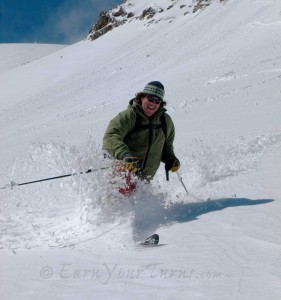
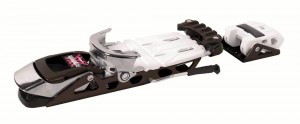
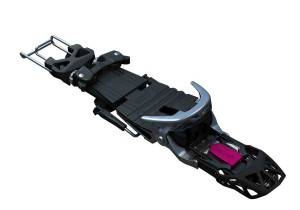
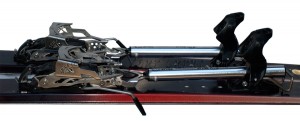
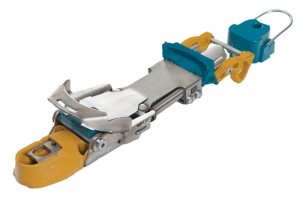
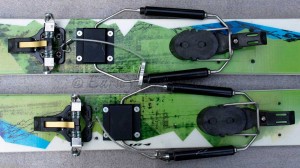
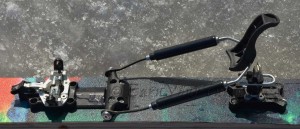
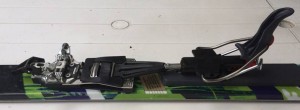
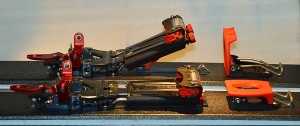
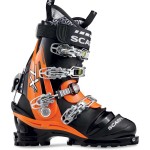
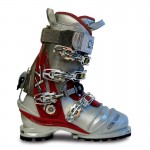
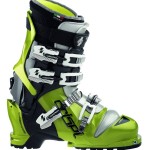
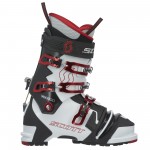
22 comments
Skip to comment form
Release is still an available option with 75mm boots. There’s the 7TM binding – that however won’t release forwards except with knee-blowing force (available in Europe if not the US). Then there’s the little known but more effective Telebry Safeout release plate – a durable and elegant design.
Awesome article Craig. For me, It’s all about combining touring efficiency with power. Step in, brake or release are nice add on but won’t get me to change. So I would probably go in the TTS family. As you pointed out, boots are my main problem. I need something more beefier than the TX-Pro. I can’t see why there is an investment chalenge putting inserts on the Comp for Scarpa…
True on both counts Ziggy. My comment is more indicative of what is readily available. Few carry 7tm in the states, and even Voile, after 20+ years dropped their Complete Releasable Binding for lack of interest/sales. So yes, release IS available for 75mm, but the compromise is not deemed worthy by enough to make it a valid option. IMO. 😉
Excellent, timely overview! Thanks Craig.
Please please please! Please someone buy Scarpa’s old F1 mold and start injecting stiffer pebax into the belows, slap a duckbutt on the sole and watch the Dynafit tele revolution. That tele-F1 combined with Meidjo or TTS is something I would pay a pretty penny for. I’d pay more than that for a carbon F1 tele. Craig, you seem to have industry connections. Maybe you could bend an ear…
That would be cool. Maybe a kickstarter campaign and a direct to consumer business model: preorder your boot and the manufacturer only builds what’s ordered. No middleman, no need to build stock to supply distributers who need to supply full size runs for retail stores. Possibly a try before you buy program where you pay shipping for a demo pair to try on for size then order the model you want with the features you want a-la-carte.
Yep. And for those of us that liked an active binding, 7TM didn’t cut it (Telebry always seemed like too much hassle to me). Switched to Hammerheads. Destroyed my lower leg at high speed. No more tele, and some lingering issues with that leg for the rest of my life. No release = non-starter.
7TM Power wasn’t too bad.
SafeOuts are no more complex than the old CRBs. They keep me telemarking despite injuries.
The only compromise I can see with the SafeOuts is weight. But my whole rig is not excessive. Bryce Wheeler of Telebry provides excellent support.
As long as authoritative sources like this one ignore releasable options they’re going to vanish.
That’s a good jab to the editor’s pen. 😉 My bad for dismissing releasable 75mm tele options by saying they were missing, as in “not available.” As my edited text (above) makes more clear, it isn’t that releasable options haven’t existed for telemark, for decades no less, starting with Voile’s CRB, Rottefella’s TRP, as well as the 7tm and Telebry options, but the market has clearly rejected them over the years. I alluded to that in the opening paragraph.
And you are correct that my experience and influence in this market has affected that. Except if you look at the historical record you will see I promoted safety release in the pages of Couloir, but the market said, “Naaaah.” Sometimes we chose expedience and the rewards that come from embracing risk over safety. It is not always the best choice, just the more common one.
I agree the 7TM Power wasn’t too bad a binding. But when my Garmont Ener-G boots gave out I went to an NT Bulldog setup with the yellow TX NTN boot. . Great edge control. Now I am primarily on NTN Freedoms. I agree with earlier posters, the Scarpa TX Pro is too soft a boot. I finally bit the bullet last season and bought the TX Comp.
A great boot, with Freedoms, but it takes a while to break in the Comp.
Sure. And maybe there’s been an attitude among users that a free heel is a kind of protection in itself. That was true to a degree with leather and sloppy bindings but as we baby boomers age with plastic we discover painfully that more is needed.
Perhaps at that point many bail out of touring & turning, deciding that the recovery work is too high a price to pay. Or go to NTN hoping its release will be protective.
but can they do powder without putting too much pressure on the tip of the skis and sinking in…..from the early days a guy working for rotofella told us they suck in powder because they put too much pressure on the front of the ski… who cares about carving???
You’re asking a universal Q. The answer is dependent on the specific combination of boot/binding/ski and the skier style. In general the more “active” bindings apply lots of tip pressure (within this report: FreeRide, Outlaw, TTS). This can be accommodated/countered by a change in tele style, but YMMV. Less active bindings such as the Switchback (not NTN), Meidjo, or a detuned TTS (more forward cable position) will generally ski powder without excess tip dive. Again, YMMV.
Well this is what i mean, i like my current non NTN setup (Garmont boots and G3 bindings), and from what i have heard, i admit, that was at the beginning of NTN, the NTN are not good in powder. So there are passive NTN bindings that are better for powder?
Yes there are. At the current moment the least active NTN bindings are Meidjo, Spike and Freedom. Meidjo delivers less power to the tips than Freedom, Freedom less than almost anything else that works with NTN boots. Spike can be easily detuned by moving the cable pivot forward and using soft springs.
If anything, NTN generates much less tip pressure than any underfoot connected heel cable binding… Your information is outright false. I’ve had the original Rottefella NTN on 15 pairs of skis. Everything from Reverse camber/ reverse sidecut Moment donner party to 192cm Voile drifters (128mm underfoot) There is no “tip dive”. Your “guy” at “rotofella” probably doesn’t know how to ski…
Once again, tele_skier tells it like it is.
Tele_skier: Please build a tx comp with inserts, and tele-tech binding that skis like my O1 rid stiffs, is pulled towards the earth’s COG like my radicals, accepts crampons, has a reliable safety releasable, brakes, and while you’re at it, might as well throw on an on-the-fly tech heel too! PLEEEEEZE! (I know you can do it)
NTN would be good for Gates/Racing,Parallely
NTN,Parallele
Still waiting on that sub 3lb NTN compatible boot, similar in weight and power to the refined and re-released Scarpa F1. I think it’s coming, but the bindings aren’t quite standardized yet and the Meidjo is still quite expensive and not widely available. A reliable $400 binding retail that weighed around 2.5lbs and a sub 3 boot would push telemark back into weight and price competitiveness with modern recreational AT setups and I think that the market would be reasonably healthy for that. IMO, the TTS systems I have tried don’t feel that great- I feel like they are not particularly progressive. They are really good at making parallel turns but that’s not why you would not ’em.
Patience is a virtue. Less than 3 lbs. is a nice goal. Bellows sort of prevent using lighter plastics (that don’t flex well). Word on the street is 2020.